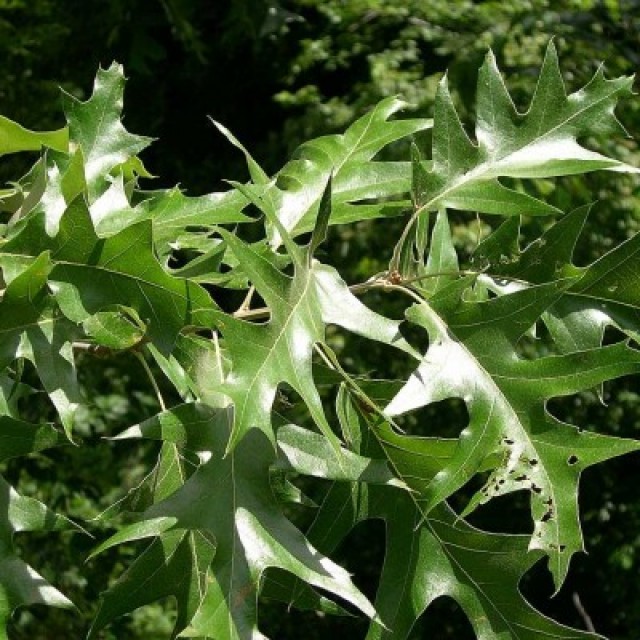COMMON NAME
Black oak
SCIENTIFIC NAME
Quercus velutina
Plant family
Beech (Fagaceae)
Plant group
Deciduous Trees and Shrubs
5-7 bristle-tipped lobed leaves. Typically dark and shiny on upper surface and variable in shape. Young leaves are red dish and densely hairy.
456 reports
173+
OBSERVERS
456+
OBSERVATIONS
Identification hints
Leaves usually have 5-7 lobes that each end in a bristle-tipped point, are typically dark and shiny on the upper surface, and can be quite variable in shape. The young leaves are reddish and densely hairy. Mature bark is dark and broken into short, irregular block-like strips. Fruit is an acorn. Found in dry woods. There are frequent hybrids between black oak and other related oaks, such as red oak. For the purpose of the New England Leaf Out Project, you can include any oak tree that reasonably fits the above description as long as the leaves have pointed obes.
Did you know?
Black oak trees do not generally begin producing acorns until they are 20 years old" According to the US Forest Service, Black oaks produce their best seed crops between 40 and 75 years of age.
DISTRIBUTION IN TH U.S.
Alabama
,
Arkansas
,
Connecticut
,
Delaware
,
Florida
,
Georgia
,
Iowa
,
Illinois
,
Indiana
,
Kansas
,
Kentucky
,
Louisiana
,
Massachusetts
,
Maryland
,
Maine
,
Michigan
,
Minnesota
,
Missouri
,
Mississippi
,
North Carolina
,
Nebraska
,
New Hampshire
,
New Jersey
,
New York
,
Ohio
,
Oklahoma
,
Pennsylvania
,
Rhode Island
,
South Carolina
,
Tennessee
,
Texas
,
Virginia
,
Vermont
,
Wisconsin
,
West Virginia
HABITAT
There is no information available about this species.
See Menu
- 2021 Chicago Botanic Garden. All Rights Reserved.
-
Creative Commons
BY-NC-SA 4.0 - Terms of Use
- Privacy Policy
- Data Sharing and Citation Policies
- 2021 Chicago Botanic Garden. All Rights Reserved.



